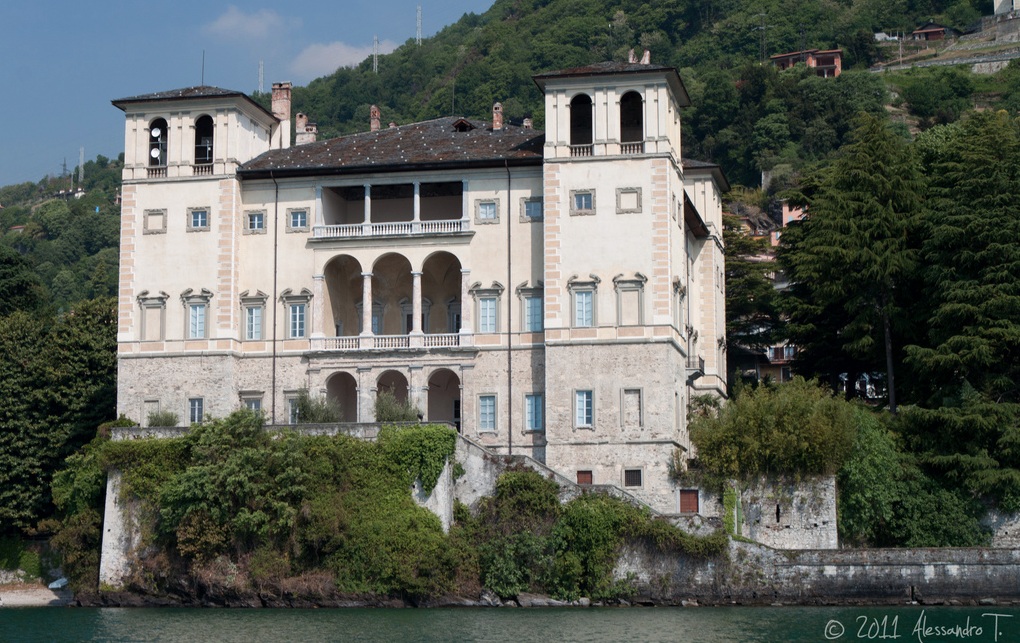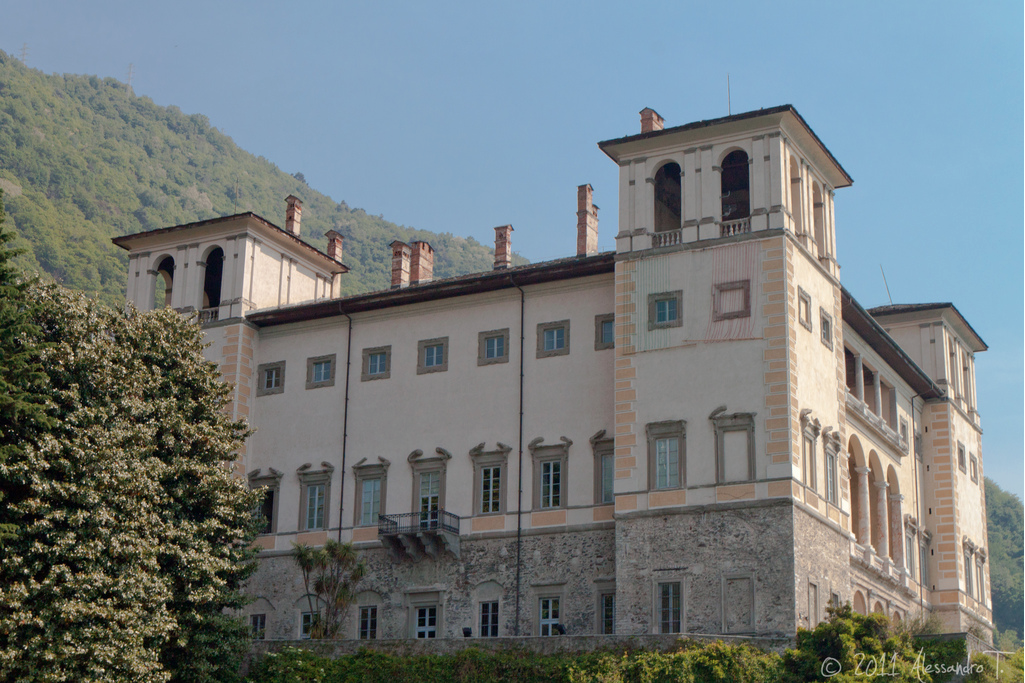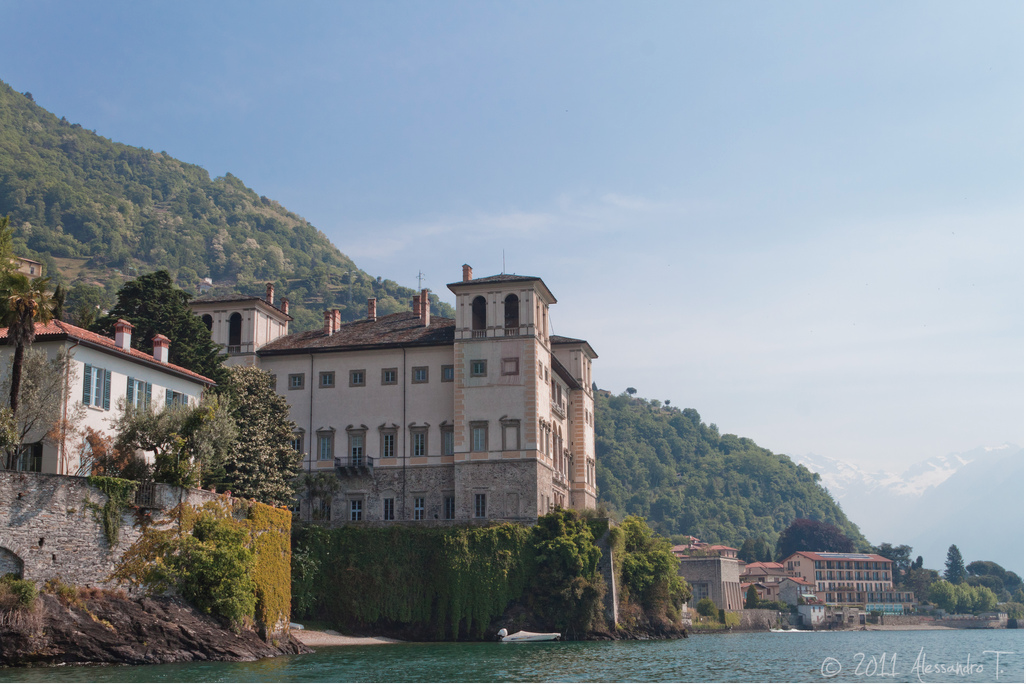Edificato sopra i ruderi dell’antico castello di Gravedona (di cui rimangono alcune tracce), Palazzo Gallio è un’affascinante combinazione di arte e storia che affonda le proprie radici sia nelle vicende del piccolo borgo che tra i poteri dei ricchi signori europei del XVII secolo.
Conosciuto anche come Villa Gallio o Palazzo delle Quattro Torri, si pensa che fosse stato costruito su progetto di Pellegrino Tibaldi mentre altri lo attribuiscono a l’architetto Piotti, tuttavia mancano dei riscontri sicuri in merito. Una cosa è comunque certa: fu il vescovo Tolomeo Gallio a volerlo nel 1586, in rappresentanza del potere feudale sulla contea delle Tre Pievi (Dongo, Gravedona, Sorico), di cui la famiglia Gallio era stata insignita nel 1579 per volontà del re di Spagna Filippo II.
Proprio qui, nei luoghi che avevano fatto da scenario alle scorribande di Gian Giacomo Medici, il palazzo costituiva un presidio sicuro da cui il potere dei Gallio si estendeva su tutta la sponda occidentale del Lario fino ai confini con la Valtellina.
Quando nel 1607 il cardinale Gallio morì, il palazzo non tutto era del tutto completo; il nipote omonimo, Tolomeo Gallio duca d’Alvito proseguì i lavori fino al 1620, anche se a Gravedona non abitò mai stabilmente, ed in seguito sempre i nipoti ne trasportarono parte degli arredi a Napoli.
Le successive vicende della dimora non furono troppo fortunate: utilizzato da francesi e spagnoli come ospedale militare, agli inizi dell’Ottocento venne parzialmente trasformato in filanda da uno dei proprietari.
Attualmente è sede della Comunità Montana Alto Lario Occidentale che vi promuove manifestazioni culturali, ed è uno dei luoghi più visitati di Gravedona.
Built over the ruins of the castle of Gravedona (of which there are some traces), Gallio Palace is a fascinating combination of art and history that its roots both in the affairs of the small village between the powers of wealthy Europeans by the XVII century. Also it is know as Villa Gallio or Palace of the Four Tower. It is expected to be built and designed by Pellegrino Tibaldi, while others attribute it to the architect Piotti, however lack of feedback sure about. One thing is certain: he was the bishop Tolomeo Gallio to want it in 1586, representing the feudal power of the county of the Three Parishes (Dongo, Gravedona, Sorico), whose family Gallio was awarded in 1579 by the will of the King of Spain Philip II. Right here, in the places that were the backdrop to raids by Gian Giacomo Medici, the palace became a garrison safe to which the power of Gallium stretched across the western shore of the lake to the borders with the Valtellina.
When Cardinal Gallio died in 1607, the palace all was not quite complete; the namesake nephew, Tolomeo Gallio Duke of Alvito continued the work until 1620, although in Gravesend never lived permanently, and later the grandchildren I always carried part of the furniture in Naples.
Subsequent events of the mansion were not too lucky: used by French and Spanish as a military hospital in the early nineteenth century it was partially transformed into a mill from one of the owners.
It currently houses the Territorial Association that promotes cultural events, and is one of the most visited places in Gravesend.
Fonte: “Castelli basiliche e ville – tesori architettonici lariani” – La Provincia,1991



